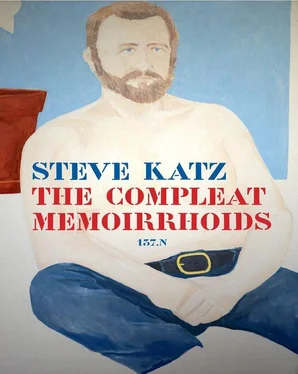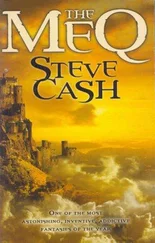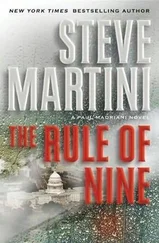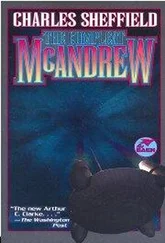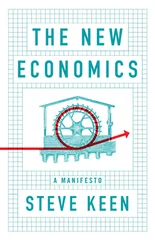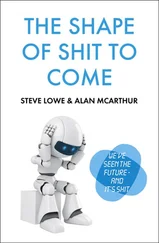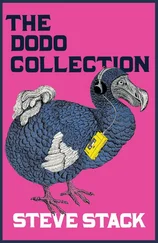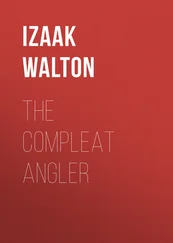We first went to Normandy, to see Mt. St. Michel, which like much beauty is best viewed in the middle distance, reflected in the tidal flat. From this distance it is all serenity. It sits across the skim of water like a gothic apparition, as if its beauty unscathed has settled there from a more perfect, more gorgeous planet. Then you get close and are assaulted by the souvenir stands with their models of the abbey in all sizes, banners that you would take to a football game, t-shirts, postcards, posters. The tschottske buying pressure is on, so many merchants trying to survive out there in the tidal flat, pressuring the tourist to buy a thing that he can throw into the closet and whip out for the next yard sale.
Martha inquires wherever we stop about the preparation of oats, and it seems wherever we stop we are in the presence of megaliths, of menhir, of dolmen tombs, stones placed on the land with mysterious intention. These echoes of the stone age have a mystifying hold on me. Maybe I’m a stone-age guy. I stand awash in the pearly light of Bretagne, in the midst of lines of these thousands of great stones that once in prehistory were hauled here from far away. They have been standing at Carnac, tipped up vertically in parallel lines maybe since 4500 B.C. From the back of my skull I feel as if I’m regressing into the past while through the eyeholes the parallel lines draw me forward into whatever sessions are coming. The people who placed these megaliths knew what they were doing. They set them so carefully by the thousands to monitor the horizons. Why would people haul massive stones with nothing but manpower over great distances to make the Stonehenge? Was this a response to the night, to the power and sweep of the Milky Way? To the processes of sunlight? How do they measure solar, celestial phenomena? One story local people tell is that the stones were once a Roman legion now ossified, frozen in place. These processionals of mass have an urgency for me. Their force transcends their weight, as if they have a potential incandescence that translates weight into light and lightness. Now a residue of stone consciousness persists at the Dome Of The Rock in Jerusalem, the Black Stone of the Kaabah in Mecca, the kissable Blarney Stone in Cork. The Israelites tipped up stones all over the Negev, faced them East, and called them the house of the Lord. These Brittany megaliths sponge the light during the day, and measure out the moon and stars at night. You don’t have to see them. The blind surely take in their presence. They comb the danger out of storms. They count the wind. Yipes! I wax metaphorical here. Could be stoned. Long before I came to Brittany, or saw Stonehenge, when I lived in Italy, in Puglia, I remember coming on a megalith in the center of a tiny town called Uggiano La Chiesa. So far South, I thought. I’d been looking at plenty of sophisticated, complicated Italian art and architecture, but this grabbed me equally. I don’t know why. Like I said, maybe I’m a stone-age guy. I squatted in the dust of the small roundabout and stared at this anonymous monument against oblivion. I watched it in the grinding midday heat and sun. People had erected the megalith here millennia before Rome. Was this the spike that held the heel of the boot, The Salento, in place in the Adriatic? It rested here indifferent to worship. It took a while to pull myself away from it, and this simple stone stays in my mind imprinted as strongly as any painting by Piero or Antonello or Raffaello. The Michelangelo slaves emerging from their stones are powerful partly because they echo the megalith. These pieces manifest an intelligence, a megalithic knowledge to which we no longer have access. What trace will the current technology leave? Will these inundating terabytes of information leave even a residue?
Every time Martha inquires about the preparation of the oats the people with great patience and geniality explain that they boil this cereal. “We boil the oats, Madame. Sometimes in water and sometimes in cider (the preferred local beverage, hard or sweet). We eat this with cream and sugar.” Everywhere we go in Brittany, to restaurant or farm, the people boil the oats.
The Pensione Bartolini is on the same bank of the Arno as the Chie-sa del Carmine with its Brancacci Chapel and my Masaccio Tribute Money fresco. This pensione was the setting for E.M. Forster’s A Room With A View . I was glad I found it. I looked out of my tiny room through a dormer window with a view of terra-cotta rooftops, clothes flapping on lines from edge to edge. I had never seen such beautiful rooftops. My bed in Florence was just a few blocks away from the object of my pilgrimage, the Brancacci Chapel, my Masaccio.
Before I left the US I put my work in the hands of the Sterling Lord agency, that later made tons of money for Norman Mailer, but never for me. It felt good to address letters to Sterling, as well as to Lord. I booked passage third class on the Saturnia, older sister ship of the Andrea Doria, the Italian Line’s flagship that went down in a storm the year before. We stopped for a day each in Barcelona, Naples, Palermo, and Piraeus. The final port was Venezia. We disembarked in the afternoon. I was off the boat. I recovered my land legs and got on the road again. It didn’t register with me that I was in Italy. I didn’t think to stop to see Venice, but hustled to Mestre, found the road south, and rode my thumb toward the Masaccio. “Kennedy. Kennedy.” The truck driver was thrilled at the American elections, and was hoping I would sprout some Italian language. “Kennedy,” he repeated all the way to Firenze where he dropped me off somewhere near Santa Croce. I blundered my way to the Pensione Bartolini.
The church was dark and vacant. I was the only tourist in this chilly space. Compared to the exercise in mob management that tourism is today in Italy, my experience was direct and simple. Even the Uffizi was an easy solitary stroll among masterpieces. I walked back in the obscurity to the dimness of the Brancacci chapel, with its Masaccio/Masolino frescoes, some of the chapel finished by Filippo Lippi. Masaccio died at twenty-seven, and had an enormous impact on the history of art. If I died right now, thought I, no impact.
I spent a couple of hours squinting, struggling to make out the frescoes. When I left my eyesight was dim and blurred. The Tribute Money had destroyed my eyes. I mastered Italian as much as I needed to buy some vitamin A at a pharmacy. Veetameena Ah! Once my eyesight returned to normal, I returned to the chapel. The frescoes were lit now, much easier to see. An older couple looked at them, the bearded man very professorial, wearing tweed jacket with leather elbow patches, an unlit pipe in his hand that he occasionally brought to his mouth.
I greeted them and asked if they were from the States. “Boston,” said the woman, who sported a grey ponytail, and wore comfortable blue polyester slacks and a yellow sweater. “Actually, Cambridge.”
The lights went out and the couple looked at me as if they expected me to do something. After a few uncomfortable moments, with a huff of exasperation, the professor brushed past me and dropped a coin into a box attached to the wall beside the chapel. The lights went on again. It had been my turn to pay. I mumbled an apology. To light them up all I needed was a fifty lira coin. That was the trick. The fresco had a simple presence in the light, each of the figures a player in the overall narrative, which is divided into three parts in one powerful composition — in the center stands the tax man with his back to us demanding the money from Jesus who is surrounded by his disciples. Jesus gestures towards the river. Peter kneels by the river to take the coin miraculously from the mouth of a fish. Peter appears also on the right side of the fresco as he gives the coin to the taxman. The power of the work is in the simplicity and nobility of all the figures, who dominate the modest architecture. When I see the chapel much later, restored to what they say is the brilliance of the original colors, I feel betrayed. It looks to me like a cartoon version of what I remembered.
Читать дальше
